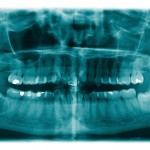
The extraction of mandibular third molars is a common surgical procedures that is associated with postoperative complications including pain, swelling, alveolar osteitis, trismus, and infection. Platelet-rich fibrin and advanced Platelet-rich fibrin are rich in growth factors that promote wound healing and some studies have suggested that they help reduce postoperative complication of third molar surgery.
The aim of this review was to investigate the effectiveness of leukocyte- and platelet-rich fibrin (L-PRF) and advanced-platelet-rich fibrin (A-PRF) n mandibular third molar extraction
Methods
Searches were conducted in the Medline/PubMed, Embase, Web of Science and SinoMed databases. Randomised controlled trials (RCTs) comparing L-PRF and A-PRF in mandibular third molar extraction were considered. Outcomes included pain soft tissue healing, alveolar osteitis, and periodontal changes. Two reviewers independently extracted data and assessed risk of bias using the Cochrane domain-based tool. Meta-analysis was conducted using mean difference (MD) for the continuous data and the risk ratio (RR) for dichotomous data together with 965% confidence intervals (CI).
Results
- 10 studies involving 384 patients (414 third molars) were included.
- 4 studies were considered to be at low risk of bias and 6 at unclear risk. 6 studies reported on pain outcomes- there were no significant reductions in pain with L-PRF or A-PRF compared with the control group on 1,3 or 7 days postoperatively.
- Network meta-analysis showed that A-PRF reduced pain at 3 and 7 days postoperatively compared to control.
- Better soft tissue healing was seen in the L-PRF group at 7 days compared with controls.
- Two studies showed no significant reduction in alveolar osteitis in the L-PRF group compared with controls.
- Two studies reported on periodontal changes, but no meta-analysis was conducted.
Conclusions
The authors concluded: –
The limited results confirmed that PRF derivatives only reduced some postoperative symptoms and did not prevent them all. Application of A-PRF after third molar extraction reduced postoperative pain, and L-PRF improved the degree of soft tissue healing.
Comments
The authors have searched a number of major databases for RCTs investigating the effects of platelet-rich fibrin (PRF) derivatives during the mandibular third molar extraction. They identified 10 relatively small RCTs. Previously we looked at another review of PRF and its effects on third molar outcomes by Xiang et al (Dental Elf – 18th Sep 2019), that review also included 10 RCTs none of which are included in the current review. This review includes 2 studies that found no significant reduction alveolar osteitis while the Xiang review included 3 that indicated a reduction in alveolar osteitis with use of PRF and a 2020 Cochrane review by Bailey et al (Dental Elf – 5th Aug 2020) also included 2 RCTs which suggested that PRF may reduce the incidence of alveolar osteitis OR= 0.39 (95%CI; 0.22 to 0.67). High quality trials that are well conducted, of appropriate size and use common outcome sets that are well reported are needed to properly assess any beneficial and cost effectiveness related to the use of PRF for managing the postoperative complications of mandibular third molar removal.
Links
Primary Paper
Bao M, Du G, Zhang Y, Ma P, Cao Y, Li C. Application of Platelet-Rich Fibrin Derivatives for Mandibular Third Molar Extraction Related Post-Operative Sequelae: A Systematic Review and Network Meta-Analysis. J Oral Maxillofac Surg. 2021 Jul 13:S0278-2391(21)00661-3. doi: 10.1016/j.joms.2021.07.006. Epub ahead of print. PMID: 34403654.
Other references
Dental Elf – 18th Sep 2019
Dental Elf – 5th Aug 2020
